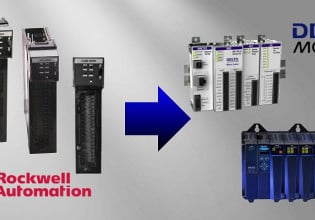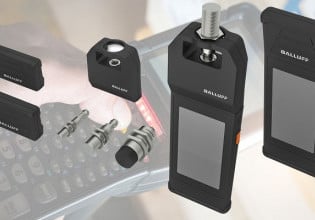How to Best Use PLM in Automation
Product lifecycle management (PLM) and industrial automation are growing closer together. This article explores recent trends and application examples of this software in industry.
Part 4 of a PLM series - be sure to check out the previous articles:
- Introduction to Product Lifecycle Management (PLM)
- Product Lifecycle Management (PLM) Software
- Utilizing PLM Software with ERP and MES
Product lifecycle management (PLM) software applications have traditionally felt disconnected from production processes, being rather concerned with the products and not the processes themselves. How PLM affects the physical process has been through outputs in the form of managed changes that are then manually implemented into the enterprise resource planning (ERP) and/or manufacturing execution system (MES) applications. From these three applications, MES is the one that has been historically closer to shop floor automated systems, not PLM.
However, recent technology improvements have brought industrial automation and PLM applications closer together than ever before. This is, in fact, one of the earliest and most tangible examples of industry 4.0. In advanced manufacturing processes, large volumes of information coming directly from many field devices can be used by higher-level systems, such as MES and ERP, to analyze and make strategic decisions about the process. This same information can now be utilized by PLM systems for different purposes.

Figure 1. PLM and industrial automation are benefitting from advancements in industry 4.0. Image used courtesy of Siemens
The ability to share real process data with the PLM, combined with the availability of more powerful CAD-based, 3D modeling, and simulation tools, has given birth to a concept called a “digital twin” in the manufacturing world. This concept will be reviewed in more detail in the next section of this article.
With these trends, we can establish that PLM is no longer unrelated to the engineering of the control systems running the processes. It is important to keep in mind that cross-functional collaboration is at the center of PLM. What this means is that control engineers can be expected to participate directly in the PLM process and it is, therefore, useful for them to familiarize themselves with the concepts and available software tools of PLM.
Digital Twins and Digital Factories
Digital Twins are virtual representations of real products and processes. In essence, they are simulations with higher levels of depth and scale. A digital twin has the capability of simulating many scenarios at the same time.

Figure 2. Digital twins are beneficial in the design phases of automobiles. Image used courtesy of Siemens
A digital twin of a product can be created using 3D-modeling software. This model can be used to analyze and predict the performance of the product under different circumstances. Changes to the product design can be made to the 3D model depending on the results of the previous simulation. This iterative process not only improves the quality of the final product but also helps reduce costs and save time. Before digital twins, companies had to rely on physical prototypes that would incur higher production costs each time a change had to be made.
Production processes can also have digital twins. These are 3D representations of entire production lines, assembly lines, intralogistics, and more. These digital twins help simulate the process to find potential bottlenecks and to stress-test the system to find failure points. The process can then be redesigned based on simulation output without the need to build anything physically.
Digital twins take the simulation beyond simple predictive analysis. In the production process digital twin, sensors collect live data, combine it with the model, and can predict subtle changes to improve the process using AI algorithms. This takes the digital twin far beyond the capacity of simple simulations, which are by no means a brand-new concept.
Digital twins of products and processes are the main ingredients in digital factories. These environments bring together the digital twins of manufacturing businesses and enhance simulations with deep learning analytics, agile technology, and artificial intelligence. A digital factory improves the planning, process flows, knowledge management, and even economic efficiency of an entire facility.

Figure 3. An example of a Digital Factory created with Autodesk Inventor. Image used courtesy of Autodesk
Digital twins and digital factories are software tools that are part of the PLM strategy of a company. Even after products and production lines have been commissioned, their digital counterparts continue providing value in the form of continuous improvement and potential retrofits. Feeding the digital twin simulations with real process data is extremely helpful as it makes the results more meaningful and accurate.
PLM and Automation Data Management
Data management is a way in which PLM contributes to improving control engineering practices. Arguably, data management has historically not been a strength in the automation world (although some companies have achieved greater success than others). Automated systems produce large amounts of information, much of which is valuable for analysis, reporting, and troubleshooting. Also, controllers and configurable field devices generate multiple files for configuration, code, libraries, etc. Without the proper methods, all this information can quickly build up and get disorganized. This can lead to problems from loss of productivity to something more serious like a production shutdown. Loading the wrong backup file to a PLC can escalate quickly.
Implementing the PLM method to organize control automation files can provide important benefits. For example, deploying a file repository with strict file versioning and controls can reduce the risk of somebody accidentally using the old version of a program.
Change management is another important tool. In an uncontrolled environment, there are security risks when unauthorized personnel can make changes to the automation undercover. With change management, this risk is eliminated by implementing access controls and a process in which every change has to go through reviews and approvals before go-live. However, that level of control must be carefully balanced so as not to create a red-tape process that prohibits necessary changes entirely.
Summary
PLM is necessary for any modern business that hopes to stay competitive with product offerings. Understanding the software, as well as related applications, can help management and engineering teams design the most effective processes that keep a business competitive and flexible in changing market dynamics.






